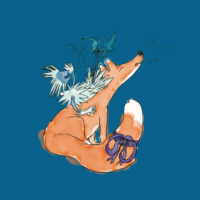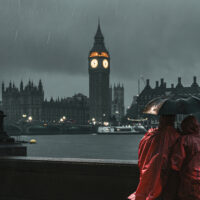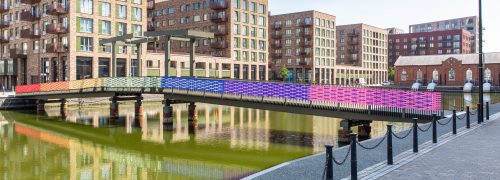
Art & Culture
Royal Albert Wharf’s rainbow bridge: because we’re in it together
Local resident Andrew Morris wanted to do something creative during lockdown. The resulting rainbow bridge, created with Bow Arts Trust who run RAW Labs, has become an inspiration.
It started on a single balcony in Royal Albert Wharf. “We wanted to do something for ourselves, and hopefully also put a smile on other people’s faces,” says Andrew Morris, remembering the strange days of the deepest lockdown. Everyone was stuck indoors, clapping for NHS carers every Thursday. “I was looking forward to that little routine every week. I wanted to show my appreciation.” Alongside his girlfriend, Andrew, an architect who also runs design research platform Studio Curiosity, decided to decorate their balcony with colourful ribbons, arranged in a rainbow pattern.
Rainbows were everywhere during early lockdown, as people chalked them on pavements and children drew pictures and put them in their windows. They were a reminder that while we might have felt isolated, we were not alone. Keen to expand the project, Andrew contacted Bow Arts Trust’s RAW Labs, Royal Albert Wharf’s artist collective, about a collaboration – momentum for the balcony rainbow was building among local residents and on social media. RAW Labs arranged permission from Notting Hill Genesis, the housing association, for a large-scale version to be installed on the foot bridge spanning the water.
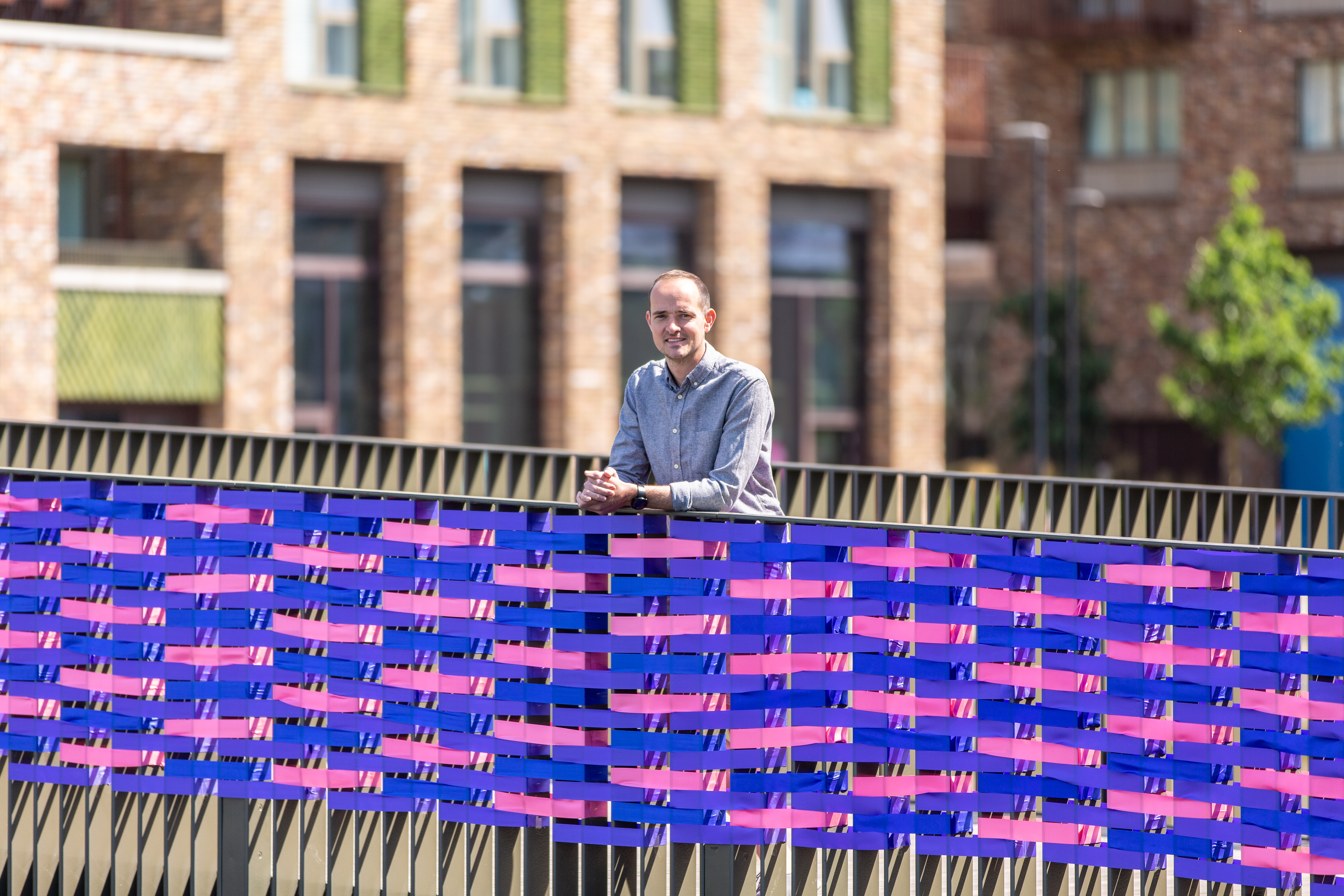
Andrew Morris on Royal Albert Wharf’s rainbow bridge
Photography: Rob Harris
We wanted to do something for ourselves, and hopefully also put a smile on other people’s faces.
It’s a lot of work to install that much ribbon – this was a true community effort. Andrew explains how they prepared templates for people to cut the ribbon into lengths at home, after picking up a pack from RAW Labs or having it dropped off, “Back then there was a lot of nervousness about how safe it was to go out, so we wanted to develop different ways for people to participate while feeling safe.” The installation on the bridge took place over two weekends, with the help of about 50 volunteers from the local area.
“We divided the length of the bridge into 18 sections and asked one household to look after each section to install the ribbon.” A template showed people which pattern to use: it’s a classic rainbow, but within each colour section there’s plenty of detail. When it all came together, the bridge had been transformed into a bright, glowing rainbow, reminding everyone that we’re all in this together.
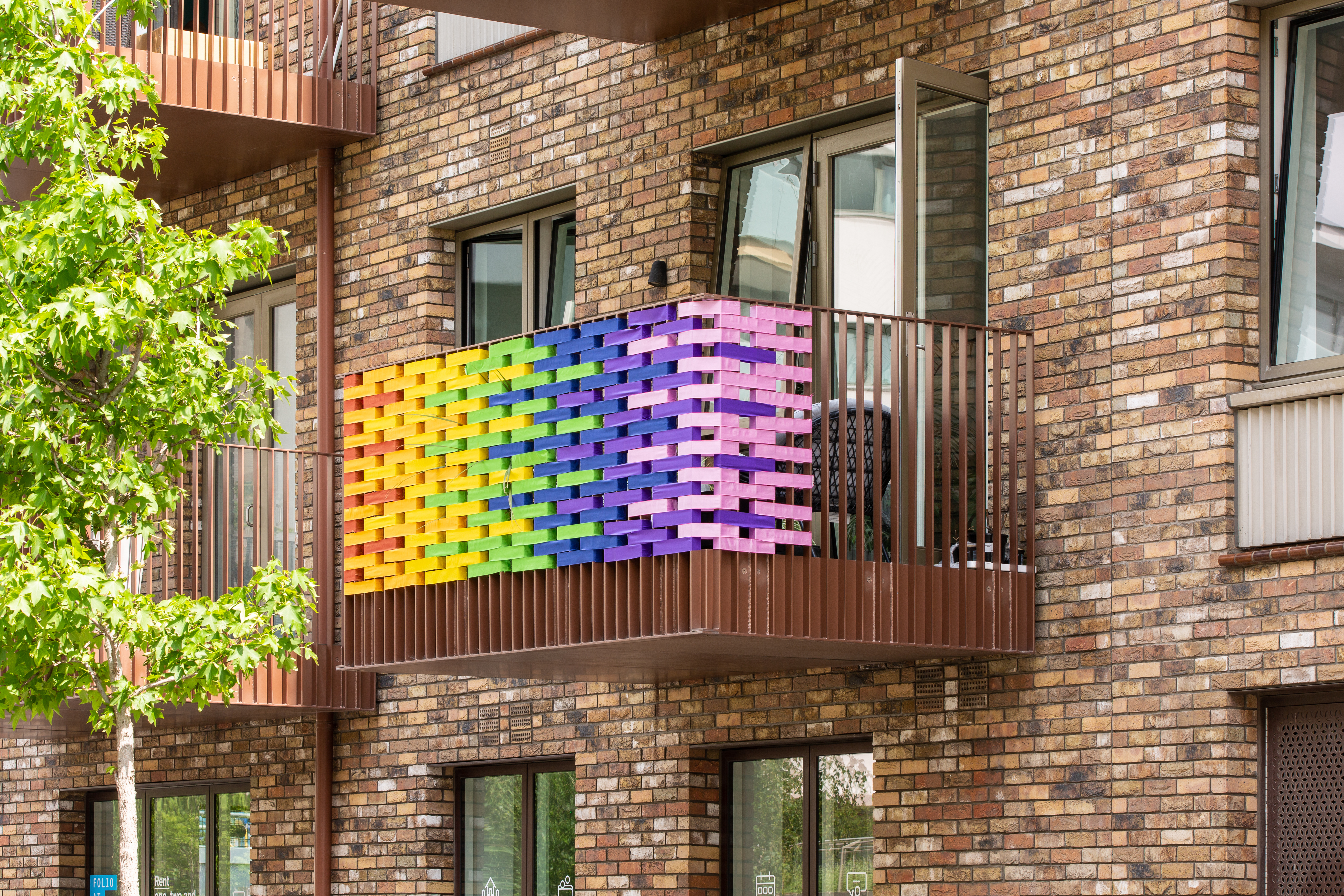
Andrew's balcony in Royal Albert Wharf where it all started
Photography: Rob Harris
When it all came together, the bridge had been transformed into a bright, glowing rainbow, reminding everyone that we’re all in this together.
Andrew has lived in Royal Albert Wharf for about 3.5 years. As one of the first residents to arrive, he’s enjoyed watching the area come to life. “But while I’ve been here for years, I didn't necessarily know many of my neighbors.” The rainbow changed that, “This project was a good excuse to get to know people!” Andrew enjoys living in the area, “I was excited to come here and watch it develop. But it’s reminded me that development is slow!” He laughs; there’s a lot of great things coming to the Royal Docks, but the timeline is years, not months. “Living in areas under development can put pressure on people and communities.” He really enjoys the wide open space of the Royal Docks, “We have the view all the way eastward, down to Canary Wharf, and it makes you feel connected to the city. You've got these amazing, expansive skies here that you don’t experience very many places in the city.”
The rainbow bridge became an attraction in Royal Albert Wharf – people would come there just to see it. It was featured on billboards in central London during claps, and it won the public vote at Dezeen Design Awards. “That was more than we expected,” says Andrew – it’s an international award. “But it goes to show we're all going through the same thing with the pandemic. The same constraints are placed on everyone.”
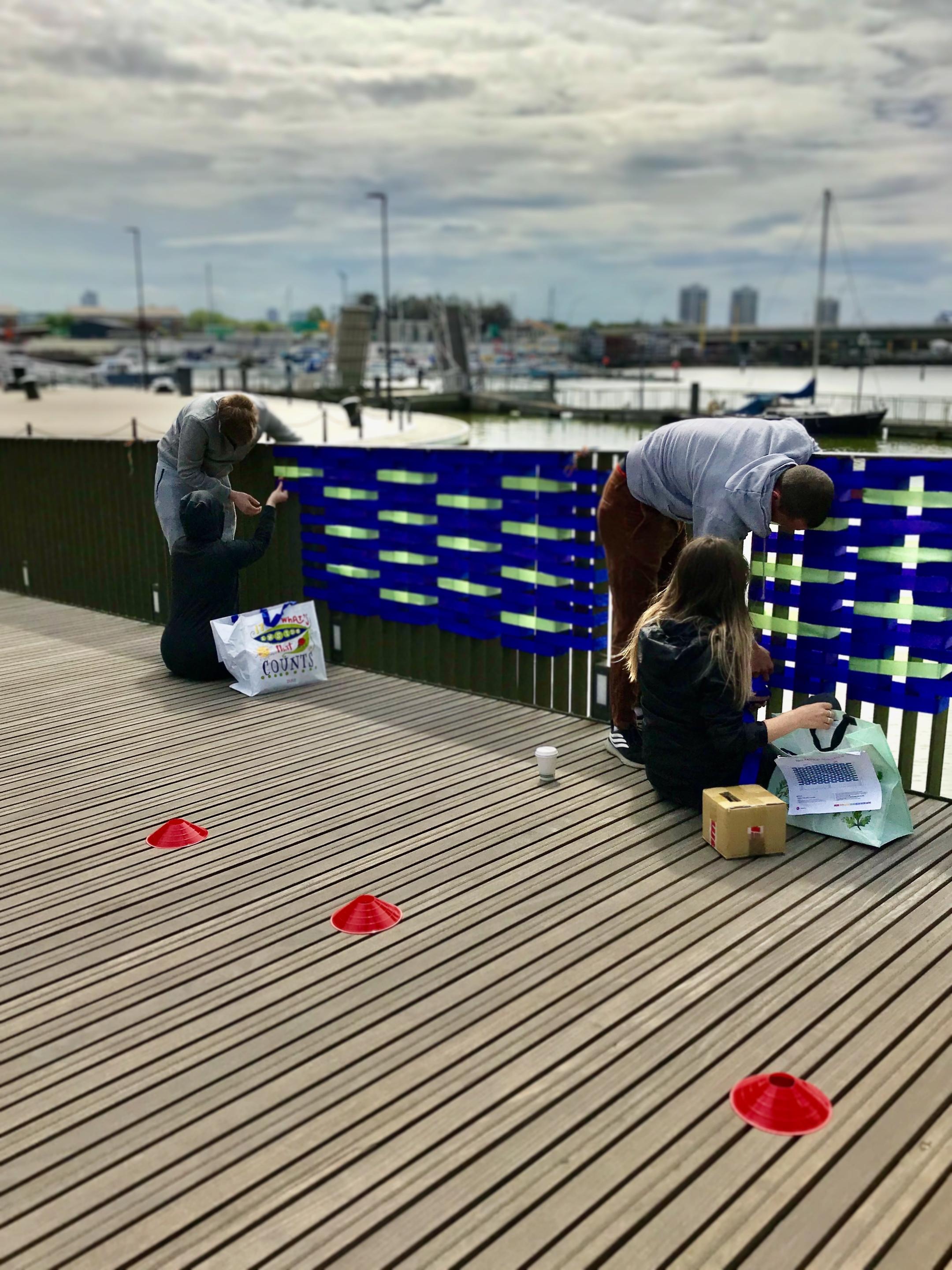
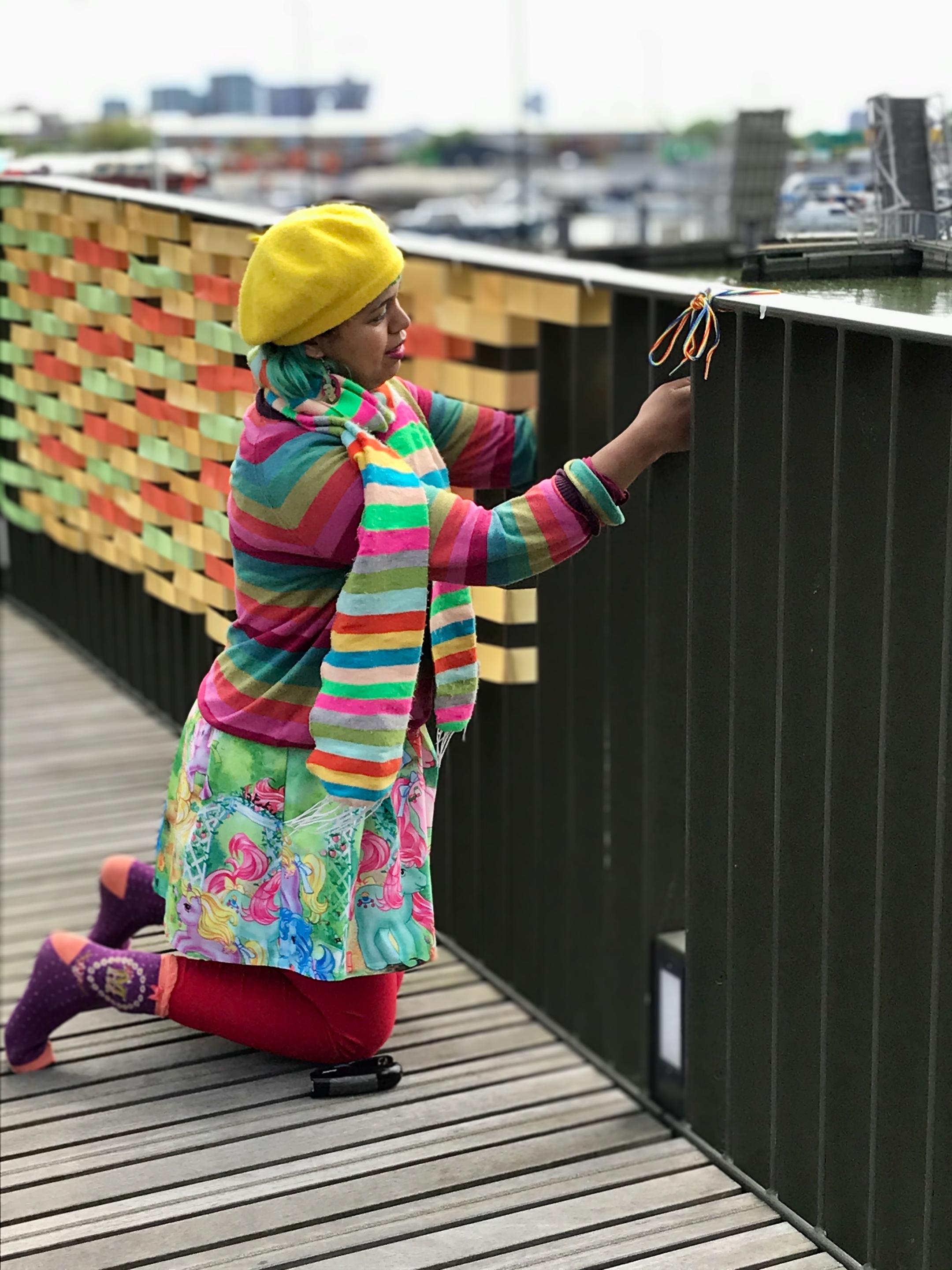
Some of the volunteers from the local area who helped install the bridge
Photography: Andrew Morris
The rainbow stayed up for three months – that’s how long the delicate ribbon could stand up against the climate of the Royal Docks. But it brought the community together, and that effect will last a lot longer, “What’s been just as interesting about this is thinking about how we value public spaces, and how we can give people in local communities a sense of ownership over the spaces around them,” says Andrew. “There’s a beauty in people being able to use public spaces in a meaningful way, even though they don’t own them. This is something that I hope these sort of projects can inspire.”
Andrew Morris is keen to acknowledge and thank all of the participants who took part in the project: Bill Allgood; Angie Allgood; Lottie Allgood; Rodrigo Alvarenga; Sarah Baggoo; Oscar Balmaseda; Momtaz Begum-Hossain; Milana Broda; Daniel Broda; Peter Broda; Filipe Carvalho; Aaditya Chintalapati; Charlie Claydon; Danni Cow; Kristen D'Intino; Nick Deveney; Kirsty Deveney; Alex Foyle; Migeul Garcia; Anna Gibb; Alma Goralski; Ashley Handley-Collins; Roksana Hussain; Teja Jadeskaitė; Gabija Kalinauskaitė; Laura Kendrew; Pau Ling Yap; Andrew Morris; Chandrika Nayak; Tommy O'Connor; Kyrah-Ellyse Ofosu; Dorota Olczyk; Lizzie Pan; Matt Ponting; Annie Rawle; Jessica Rogers; Victoria Smith; Martin Smith; Joss Taylor; Satya Tirumala; Keon Yung; Malgorzata Zaleska; Gitare Žuromskaitė

